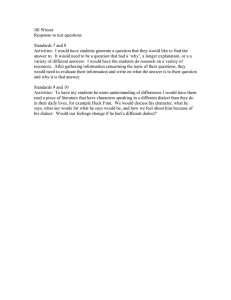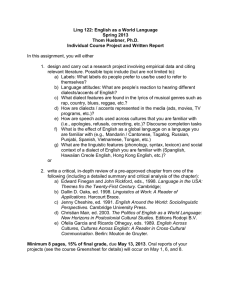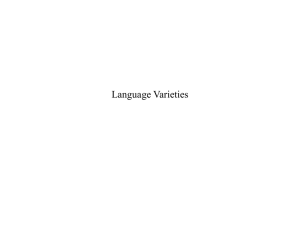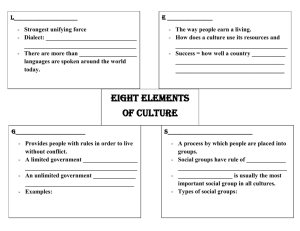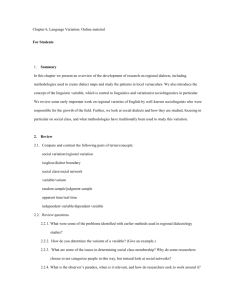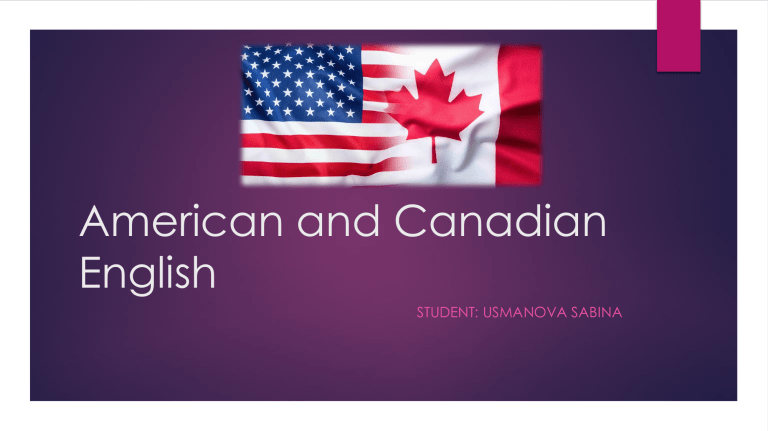
American and Canadian English STUDENT: USMANOVA SABINA The dialect regions of the United States are most clearly marked along the Atlantic littoral, where the earlier settlements were made. Three dialects can be defined: Northern, Midland, and Southern. Each has its subdialects. The Northern dialect is spoken in New England. Its six chief subdialects comprise northeastern New England (Maine, New Hampshire, and eastern Vermont), southeastern New England (eastern Massachusetts, eastern Connecticut, and Rhode Island), southwestern New England (western Massachusetts and western Connecticut), the inland north (western Vermont and upstate New York), the Hudson Valley, and metropolitan New York. The Midland dialect is spoken in the coastal region from Point Pleasant, in New Jersey, to Dover, in Delaware. Its seven major subdialects comprise the Delaware Valley, the Susquehanna Valley, the Upper Ohio Valley, northern West Virginia, the Upper Potomac and Shenandoah, southern West Virginia and eastern Kentucky, western North Carolina and South Carolina, and eastern Tennessee. The Southern dialect area covers the coastal region from Delaware to South Carolina. Its five chief subdialects comprise the Delmarva Peninsula, the Virginia Piedmont, northeastern North Carolina (Albemarle Sound and Neuse Valley), Cape Fear and Pee Dee valleys, and the South Carolina Low Country, around Charleston. These boundaries, based on those of the Linguistic Atlas of the United States and Canada, are highly tentative. To some extent these regions preserve the traditional speech of southeastern and southern England, where most of the early colonists were born. The first settlers to arrive in Virginia (1607) and Massachusetts (1620) soon learned to adapt old words to new uses, but they were content to borrow names from the local Indian languages for unknown trees, such as hickory and persimmon and for unfamiliar animals, such as raccoon and woodchuck. Before the Declaration of Independence (1776), two-thirds of the immigrants had come from England, but after that date they arrived in large numbers from Ireland. The Great Famine of 1845–49 drove 1.5 million Irish to seek homes in the New World, and the European revolutions of 1848drove as many Germans to settle in Pennsylvania and the Midwest. After the close of the American Civil War, millions of Scandinavians, Slavs, and Italians crossed the ocean and eventually settled mostly in the North Central and Upper Midwest states. In some areas of South Carolina and Georgia, enslaved Africans working on rice and cotton plantations developed a contact language called Gullah, or Geechee, that made use of many structural and lexical features of their native languages. This variety of English is comparable to such contact languages as Sranan (Takitaki) of Suriname and Melanesian Pidgins. The speech of the Atlantic Seaboardshows far greater differences in pronunciation, grammar, and vocabulary than that of any area in the North Central states, the Upper Midwest, the Rocky Mountains, or the Pacific Coast. Today, urbanization, quick transport, and television have tended to level out some dialectal differences in the United States. On the other hand, immigrant groups have introduced new varieties in which the influence of ethnic origins is evident, and some immigrant languages are widely spoken (notably Spanish, in the southeastern and southwestern states). The boundary with Canada nowhere corresponds to any boundary between dialects, and the influence of United States English is strong, being felt least in the Maritime Provinces and Newfoundland and Labrador. Nevertheless, in spite of the effect of this proximity to the United States, British influences are still potent in some of the larger cities; Scottish influences are well sustained in Ontario. Canada remains bilingual. Less than one-fourth of its people, living mostly in the province of Quebec, have French as their mother tongue. Unlike Canada, Australia has no concentration of a European languageother than English within its borders. A deadbeat was a penniless “sundowner” at the very end of his tether, and a nohoper was an incompetent fellow, hopeless and helpless. An offsider(strictly, the offside driver of a bullock team) was any assistant or partner. A rouseabout was first an odd-job man on a sheep station and then any kind of handyman. He was, in fact, the “down-under” counterpart of the wharf labourer, or roustabout, on the Mississippi River. Both words originated in Cornwall, and many other terms, now exclusively Australian, came ultimately from British dialects. Dinkum, for instance, meaning “true, authentic, genuine,” echoed the fair dinkum, or fair deal, of Lincolnshire dialect. Fossicking about for surface gold, and then rummaging about in general, perpetuated the term fossick (“to elicit information, ferret out the facts”) from the Cornish dialect of English. To barrack, or “jeer noisily,” recalled Irish barrack (“to brag, boast”), whereas skerrick in the phrase not a skerrick left was obviously identical with the skerrick meaning “small fragment, particle,” still heard in English dialects from Westmorland to Hampshire. SEE YOU LATTER


